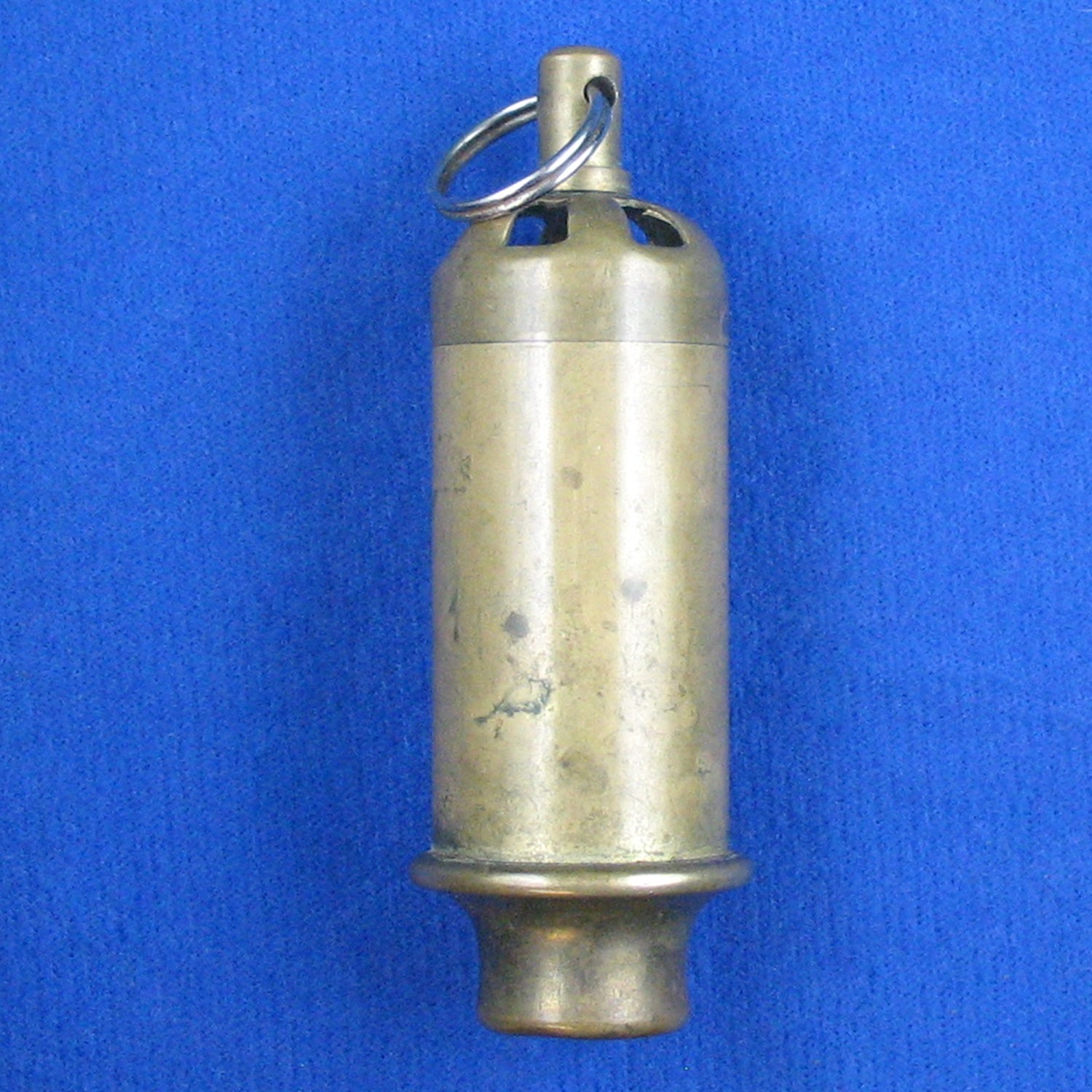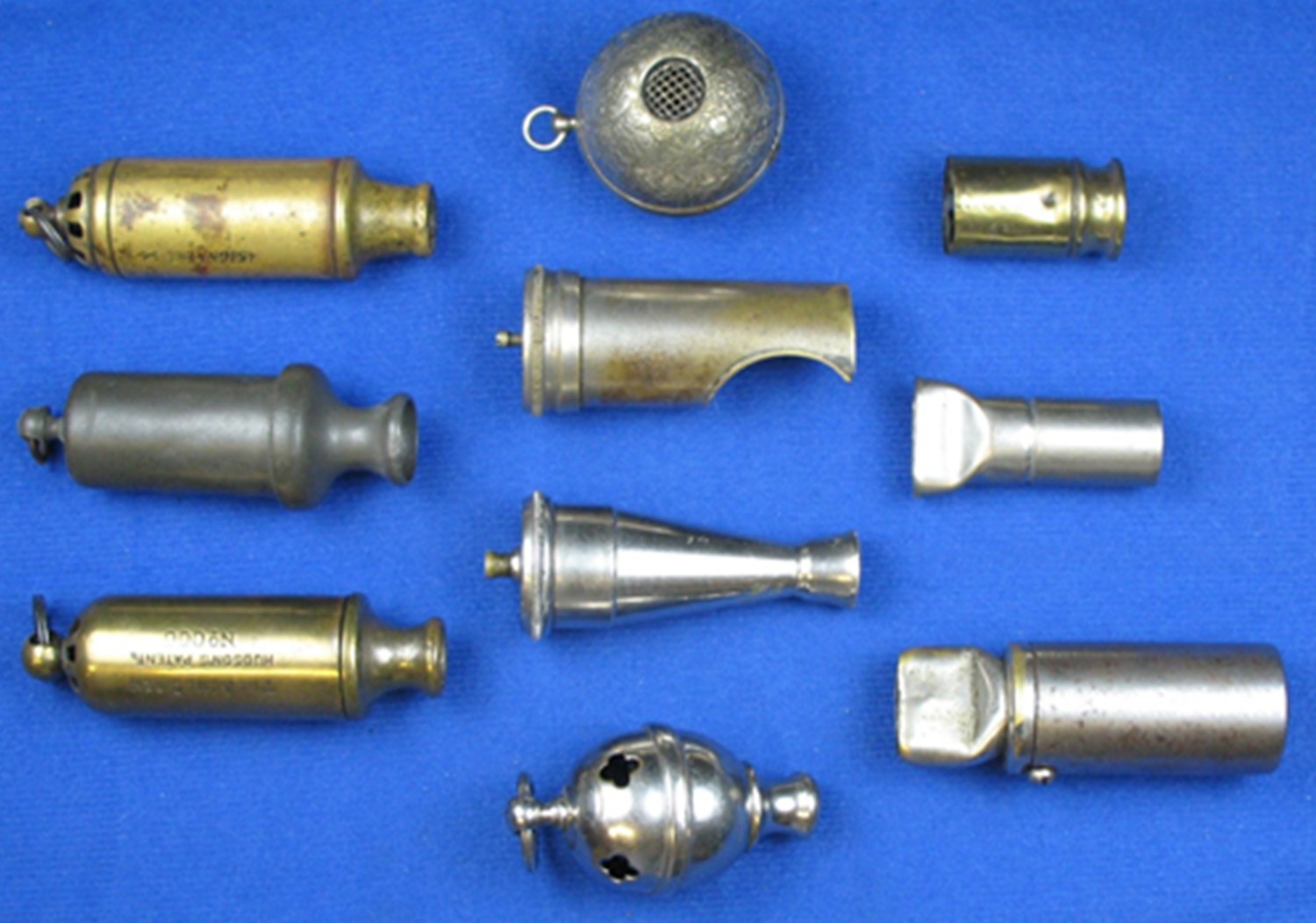Whistle Categories > Siren Whistles

Where did siren whistles originate?
Originating in the states, the UK and Germany rather simultaneously, they quickly spread to other countries such as China, France, Japan, Argentina and more.
Interestingly, the siren itself with forced air driven through air lines, came almost 100 years before the need to have mouth blown designs originate.
Even so, they increased in popularity in these three countries immediately. Countries utilizing silent movies and the like spread their use. Then as they shifted to the toy markets there was a resurgence.
How are siren whistles identified?
Each siren has to have a spinning wheel or paddle to work. We find there are 4.5.6 angled holes in the wheel ( or rotor ), each acting like an individual whistle, the force behind the wheel ( blowing ) accelerating the wheel in turn driving the pitch higher and higher.
From an independent wheel that could be removed, cleaned, adjusted and put back in again to a simpler design of a static wheel built into a housing that could not be adjusted nor removed.
Many can be identified by catalogs, patent documents and advertisements. Beyond this stamps on the cases or siren body.
Why were they made?
Early on the ability to call for help seems to be sensible. This based on the thought of calling ones to one’s side. However, at this time then, the need to repel ones also was predominant due to a cycling craze and current amount of foot traffic, horses and crowds in the cities.
Then came the use for silent movies and all other forms of entertainment requiring sound effects. There later arose air raid warnings and eventually the use in toys.
In summary, sirens could be used for straight signaling, cycling warning, air raid warning, maidens alarm and on. Eventually sound effects and even toys for children.

© – All photos with blue background property of The Whistle Gallery reference collection. Please contact The Whistle Gallery for permission of use of any website content. Use of photos without authorization is prohibited.










